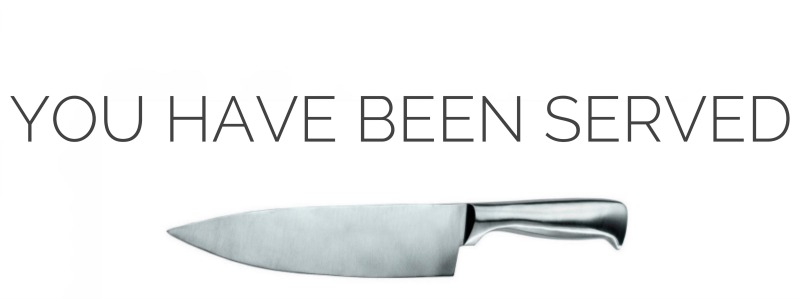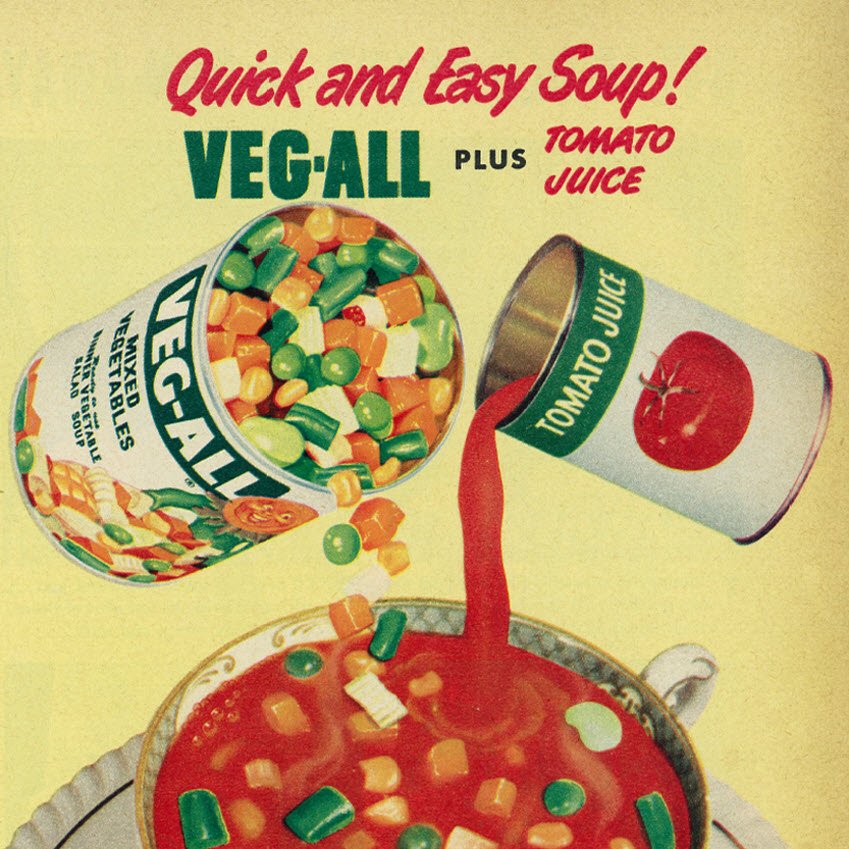Teaching Kids to Cook and Eat Their Vegetables – Part Two
“Mama, Don’t Let Your Babies Grow Up to Be Cowboys” (or Chefs)
Both my parents were born and raised in Scotland – a country not exactly famed as a culinary hotbed. I mean, Scotland’s greatest (for lack of a better word) contribution to world gastronomy is either haggis or the deep-fried Mars bar. I once read that Scotland is the world’s capital for both heart disease AND tooth decay, to say nothing of indigestion, and while this may be apocryphal there is certainly some truthiness to it.
When I was growing up, our family dinner consisted of meat and two veg. One of the vegetables was always potato, usually French fries or what my parents called chips. The meat was either beef, pork, lamb or chicken. I think. There may have been the occasional shoe or petrified stick, I can’t say for sure.
The meat, whatever it was, and if that’s what it was, was always overcooked to the same brittle, dry, solitary-confinement-prison-cell-grey. It was like eating a centuries-old family Bible. I think my mother started the Sunday roast just after breakfast in order to achieve maximum desiccation in time for 7 o’clock dinner. If she made gravy for the Sunday roast it was all absorbed by the desperate slab of meat sponge on the plate, like some sort of food equivalent of a black hole sucking up light. I sometimes went grocery shopping with my parents so I know that they purchased broccoli and green beans, but I have little recollection of any green food later appearing on my plate. That’s because all vegetables were boiled until they were as equally pallid and bland as the meat. Mostly we ate root vegetables: potatoes, beets, turnips, rutabagas, parsnips and carrots, anything that could be boiled until the colour leached out and then mashed until total mushy slurminess was attained.
We ate fish quite a bit too, but never seafood. And cheese, but only cheddar, Stilton, grated parmesan from a shaker can, Cheez Whiz (not technically or actually cheese I don’t think) or the redundantly plastic-wrapped plastic that is the Kraft single. And white bread, Shake ‘N Bake, Kool Aid, Cool Whip, Miracle Whip, Oreos, and iceberg lettuce with Catalina dressing, it being the 1970’s and all. On holidays there was shockingly sweet Liebraumilch, fizzy pink Mateus or a raffia-wrapped, long-necked bottle of chianti. Notwithstanding our cheerful lemon yellow kitchen with its avocado-coloured appliances and daisy-pattern wallpaper, and our teak-bedecked dining room with its sculptural faux Noguchi ceiling light, food in my house was joyless, tasteless and consumed perfunctorily and without enthusiasm. Needless to say, I was a pale and scrawny child, utterly undiscriminating, and entirely uninterested in food preparation or consumption for anything beyond basic survival.
My parents weren’t negligent, lazy or unloving; we ate the same food the same way as pretty much everyone else did back then. It was a time of bad taste and questionable judgement not only in food, but also in fashion, beauty, décor and music. Consider the leftover vegetable Jell-O salad or roasted Spam with pineapple rings, bellbottoms and polyester leisure suits, beehives and backcombing, shag rugs and lava lamps, the Starland Vocal Band and the Captain & Tennille. My youth wasn’t a complete cultural wasteland; we went to movies, concerts, plays, ballets, the museum and the art gallery. We got books instead of toys for Christmas. We had piano and dance lessons, or hockey for my brother. My parents did the best they could given the 70’s zeitgeist, and still managed to produce a systems analyst, an engineer and a lawyer, not one of whom ever contracted scurvy or rickets.
My first “aha!” food moment occurred on one of our first dates when my chef boyfriend (now husband) took me to what was then considered the finest restaurant in Toronto. I ordered a steak, well-done of course. My boyfriend laughed when I complained that the steak was gristly. “Well of course it is!” he said “when a customer orders a well-done steak the restaurant uses the end pieces of the striploin, the ones with the gristle and sinew. How can you complain about a tough piece of meat when you order it well-done for crying out loud!” He was entirely unsympathetic and told me to learn to like my steak rare if I wanted the prime, buttery cut. So I did. I learned a lot from him about food; mostly that I liked it a lot, particularly when it was cooked properly. I not only learned to like my steaks rare but my noodles al dente, and my vegetables with a little bit of crunch and appropriately green, orange or red instead of grey.
Thanks to my husband, I also discovered shellfish, game meat, baked goods from scratch, cilantro and rosemary, cumin and smoked paprika, sweet potatoes and squash, dark chocolate, and tempranillo, grenache, syrah, carmenere and pinot noir. Notwithstanding a few food hang-ups (I won’t eat anything that is looking back at me from the plate), and the stuff I just won’t eat (I’m talking about you offal), I was determined that the sins of the father – or in this case the mother – wouldn’t be visited upon my own children. My kids wouldn’t eat sludgy vegetables or particle board steak. When my children were growing up they didn’t know that I was allergic to fish, that I didn’t like kidneys or mushrooms, that I just couldn’t do soft shell crab or anything else that looked like a spider. We fed our children anything and everything, without editorial or criticism, without culinary cultural imperialism, with no sneering or gagging, with enthusiasm and encouragement.
During his first week of junior kindergarten, my son came home from a visit to the school library with a picture book about sea creatures. He sat on the sofa with his book, flipping the chubby pages and exclaiming “whale!”, “dolphin!”, “shark!”, “jellyfish!” and then, turning a page, came upon a terrifying and hideous (to my mind) giant squid. At the same age I would have flung the book across the room and hidden under the bed. To my great delight and pride, however, he said “ooooh, calamari!”
One evening at dinner, when my daughter was about three years old, she asked me “what are we eating mommy?”. “Lamb chops.” I replied. “You mean,” she asked, “a little baby sheep? A fluffy white baby lamb? Someone went out in a field and caught a lamb and killed it and cut it up into pieces and wrapped it in plastic and took it to the store and you bought it and cooked it and we’re eating a fluffy white baby lamb?” “Oh crap,” I thought, “I so cannot deal with a sanctimonious vegetarian toddler right now.” But I just said, “that’s right.” My daughter grabbed her lamb chop bone and, bless her, my adventurous little omnivore said “well they’re delicious!”
Raising children to be positive and open-minded about food doesn’t come cheap. You won’t get away with ordering them chicken fingers and fries from the kids’ menu when they see what you get to eat. When our kids were younger, we often took them to restaurants at lunchtime, rather than for dinner. We found that their behaviour was reliably better at lunch than dinner, and that everyone was hungry at noon but not necessarily at 6 or 7. At one rather pricey establishment, my youngest, who was then about 4 or 5 years old and too young to read the menu, saw a server carrying a plate of food to another table of diners. At $36, for lunch mind you, it was the priciest item on the menu: a towering concoction of lobster, shrimp, scallops, mussels and crab. We debated, but relented, and my son ate every scrap. It was all I could do to wrestle the plate from him before he licked it clean. It was worth it. My son was happy, he adored his meal, he impressed fellow diners with his behaviour and appetite, and I was proud to know that I could take my kids pretty much anywhere in the world and, no matter what was placed in front of them, they would likely eat and enjoy it.
You don’t need to be a chef, or married to one, in order to raise children who are culinary adventurers. Just don’t imbue them with your hang-ups, food issues, ignorance and fear. Expose your children to a rich variety of food cultures. Encourage your kids to be open-minded and tolerant eaters, and you will likely find that they grow up to be open-minded and tolerant people. Best of all, by learning to eat, your children will be inspired to learn how to cook.
A Bon Appetit blog post from earlier this year entitled “How Chefs Teach Their Kids to Cook (And Eat Their Vegetables)” has already been the subject of one of my previous rants. The gist of that rant was that if you want your kids to eat vegetables then you need to eat vegetables too. You put vegetables on your child’s plate and you expect her to eat them. You don’t negotiate, you don’t cave in and you don’t give up. In addition to tips for encouraging your children to eat their vegetables (most of which seemed to involve cookies for some bizarre reason), the Bon Appetit article also considered how to get your children to cook. One chef suggested having monogrammed chef coats and aprons made for your children. Presumably this child has a closet full of uniforms for activities like visiting the doctor, riding public transit, going on a field trip to the fire station and visiting hyperattentive helicopter mommy in the mental hospital. Others contributors made suggestions such as outsourcing the fun stuff (like mixing cookie dough), cooking things that don’t take too long (like cookies) because kids have short attention spans, choosing recipes that require molding and shaping (like cookies!) because that’s fun for kids, taking them with you when you go grocery shopping (presumably for more cookie ingredients), and easing kids into eating salads (go slow because there are no cookies involved here).
Of course my children “helped” in the kitchen when they were little. I didn’t see it so much as career counselling for them but as a time for us to be together and play. If I was making cookies then sure, they cracked the eggs or plopped the dough onto the baking sheets. But most of the time I made food to feed my children, not to entertain them. I went grocery shopping to buy food, not to fanny about with pretty purple potatoes that maybe my kids would eat because they look nice. Is celery root attractive? I don’t care, it’s delicious so eat it. Are brussel sprouts gorgeous? I don’t care, they’re healthy and yummy. You want the rainbow carrots because they’re beautiful? I don’t care, they cost twice as much, so no.
Children learn to cook because they like to eat. It’s that simple. If you feed your children microwaved fish sticks and mac and cheese from a box – or worse, if you eat that stuff yourself – then no amount of cookie baking, trips to farmers’ markets, dressing up like a chef or after school culinary classes is going to help your child learn to cook. Make and eat healthy, delicious food from scratch. Serve your children healthy, delicious food and expect them to eat it. Suffer some tantrums because you won’t buy potato-ish blobs in the shape of happy faces. Roll with it when your child says “I hate you” because you don’t buy cheese in an aerosol can like their friend’s mom does. Accept that good parenting is hard and that your children don’t have to always like you. Take your children to restaurants that don’t have “mascots” and where the chairs aren’t bolted to the floor. Don’t buy prepared and frozen food crap. Stock your cupboards and refrigerator with fresh fruit and vegetables, cheese and eggs, meat and fish, flour and rice, herbs and spices. Turn off the cooking channel on TV and line your shelves with cookbooks instead of DVDs. Then tell your child to make dinner tonight because you are going to take a nap.
Now make some pork carnitas and listen to this playlist from Nathaniel Rateliff…
Photo credit: 1950 Illustrated Ad, Veg-All Mixed Vegetables, with Tomato Juice “Quick and Easy Home Style” Soup Recipe, by Classic Film, is licensed by CC BY-NC 2.0, cropped.




